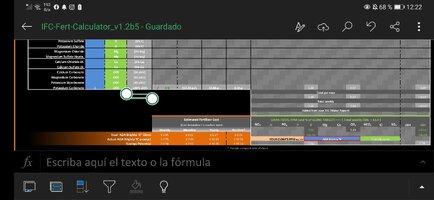caribbeanBoy
New Member
NiceSame thing. Simply repackaged.
I found a biuret 0.5 as hanuman recommend.I have used urea prills and works out very cheap and easy.
@Hanuman
I have a question
Ada brightly k in the label refer 2.6% of h2o, when I use the calculator it's Macht this % or is targeting ppm (7.5ppm) in the clone refer.
Im a little confused let me show you the calculator math. It should say 25ppm weekly I'm guessing










